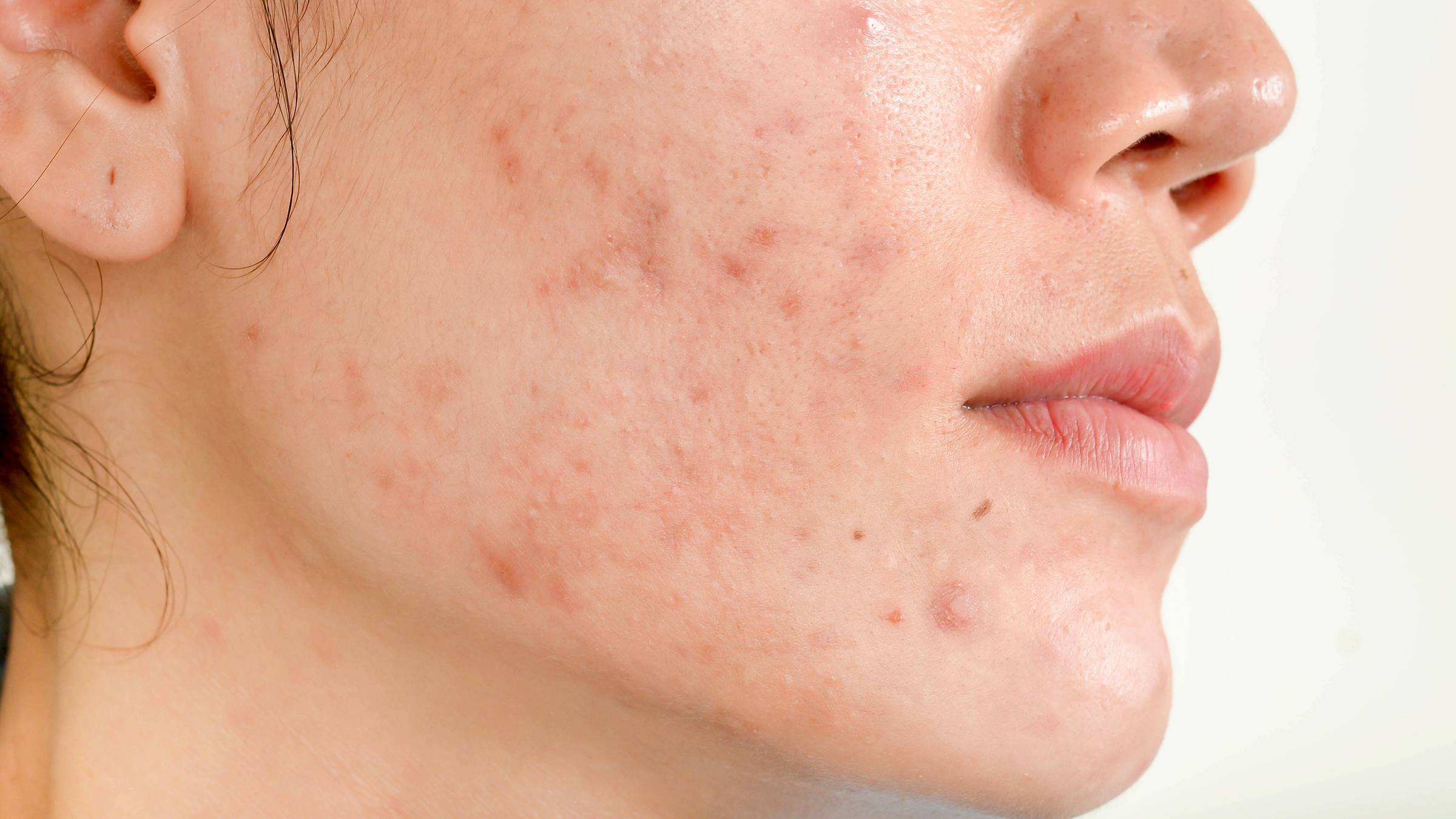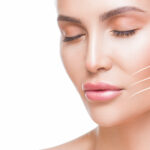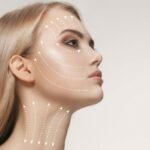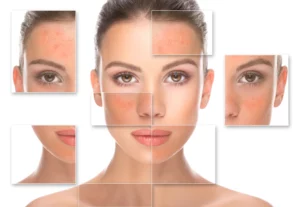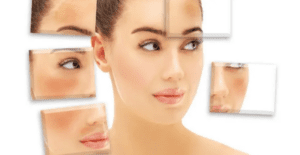Chemical peels for pimple scars
Some pimples can leave scars on the face and other areas. Nobody likes them; they are an unwanted reminder of a painful and bothersome condition. Today there are medical treatments that help get rid of pimple scarring.
What causes pimple scarring?
Both men and women of all ages are likely to experience pimples throughout their teenage years and some throughout their adult years. When oil glands are overstimulated due to hormonal changes, they create buildup in the oil glands that results in pimples. Some pimples/acne disappear as the hormones balance out, but for some, the condition continues, and it can get worse before it gets better. This can lead to pimple scarring. Pimple scarring occurs in severe cases of acne, and there are ways to reduce the appearance of scarring through facials such as a chemical peel.
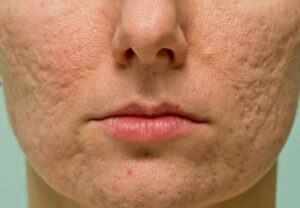
Pimple scars develop as a result of the inflammation associated with acne lesions causing irreparable damage to the underlying skin tissue. Inflammatory pimples, such as cysts and nodules, are the most likely types of lesions to cause pimple scars. The type of scarring that a patient experiences depends on the response of the skin during the healing process.
Some pimples can leave scars on the face and other areas. Nobody likes them; they are an unwanted reminder of a painful and bothersome condition. Today there are medical treatments that help get rid of pimple scarring.
Types of pimple scars
There are three main types of pimple scarring:
Atrophic scars
These scars appear as small indentations in the skin.
- Icepick scars are small scars that look like pinpricks.
- Boxcar scars are larger indentations with clear edges.
- Rolling scars have unclear edges and give the skin a rolling or undulating appearance.
They occur when the skin does not make enough fibroblasts in the healing process. Fibroblasts are cells that play a crucial role in wound healing and collagen production.
Hypertrophic scars
These scars occur when the skin makes too many fibroblasts as the pimple/acne spot heals, causing a raised scar.
Keloid scars
These are similar to hypertrophic scars but tend to be thicker than the original pimple spot. There is often hyperpigmentation, making them darker than the surrounding skin. They may be red or brown. There may also be itchy or painful.
There are, of course, several treatments that can improve or significantly reduce the appearance of pimple scarring. Chemical peels are one of the most efficient ones. It involves using a chemical solution to remove the skin’s old outer layer. New skin will replace the outer layer that is less scarred and looks smoother.
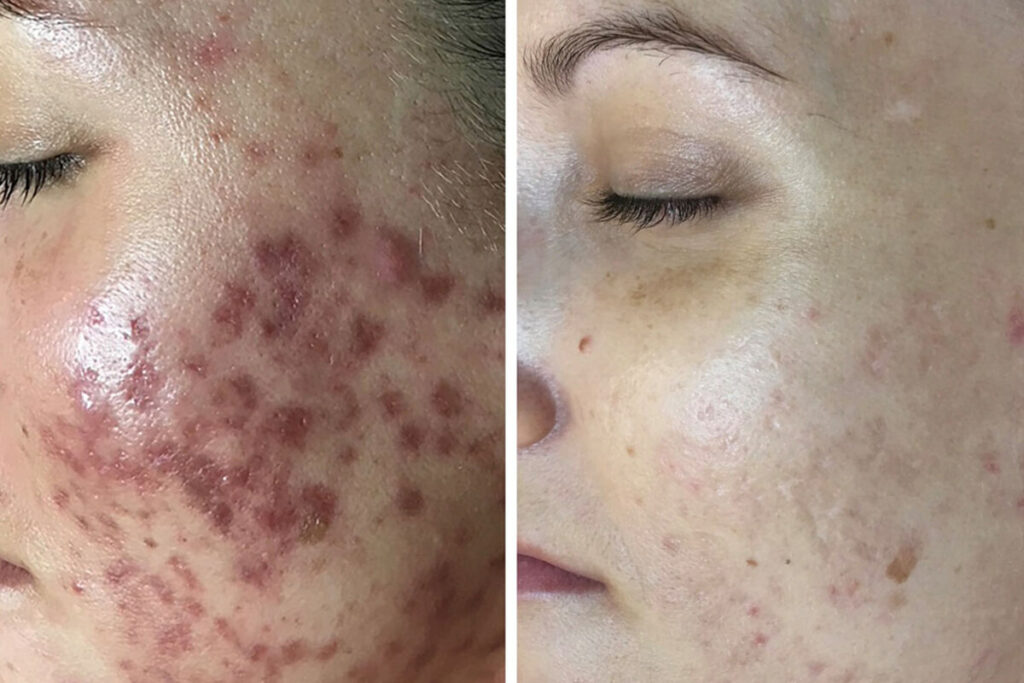
What are Chemical Peels?
Chemical peels are non-invasive cosmetic treatments that require the application of a chemical solution to the surface of the skin, designed to accelerate the rate of skin cell renewal.
As the name implies, chemical peels are made of chemicals and acids having strong exfoliating properties. When applying a chemical peel to your skin, it removes dead skin cells, debris, and oil to reveal smooth, clean, and newer-looking skin.
Chemical peels remove the top layers of skin from the face with an acid or a combination of acids. This reveals the new skin beneath and stimulates collagen growth to improve the skin’s appearance.
Chemical peels help to treat a variety of skin problems, including pimple scarring in some cases.
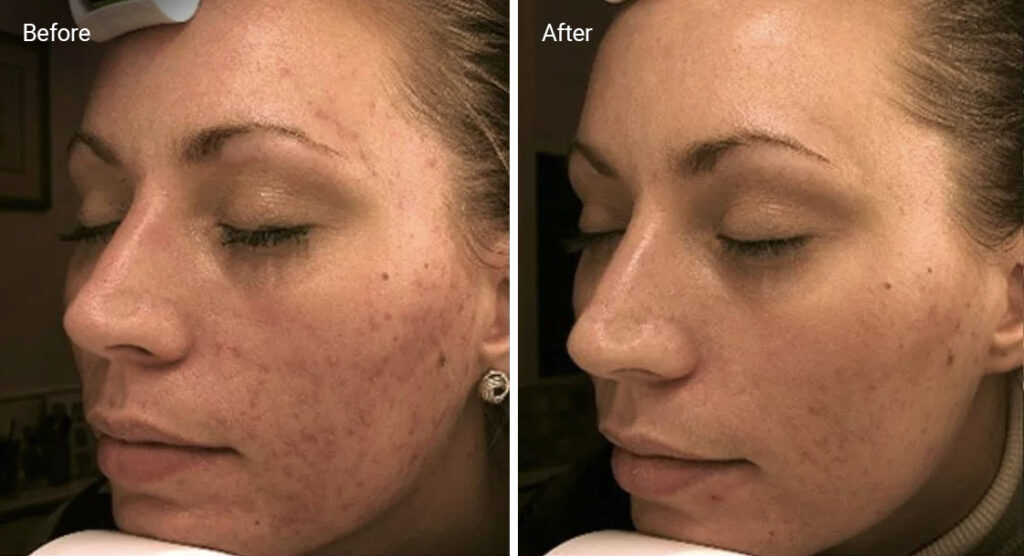
How do chemical peels help pimple scarring?
There’s never a clean breakup with acne/pimples. Even when flare-ups have gone, there may still be a variety of scars.
Chemical peels have two main functions: to loosen dead skin cells and to cause controlled damage by removing layers of skin, initiating epidermal growth, they encourage the formation of new skin cells). When a chemical peel is applied to the face, it exfoliates away layers of skin, cleans out pores, and eliminates pimple-causing components.
Chemical peeling is a very effective treatment for pimple scars as they exfoliate and resurface the skin. But, if you’re looking into a chemical peel for acne scars, a light one might do the job. Instead, medium and deep peels are usually more beneficial for improving the bumpy texture that comes with pimple scars. Here’s how they work:
Medium chemical peels most often use trichloroacetic acid (TCA) to remove the epidermis and the upper dermal layers of skin, getting rid of damaged and scarred skin cells in the process. Afterward, the skin starts to form new, undamaged cells, resulting in a smoother skin surface.
This is where our favorite collagen comes in. As the skin starts to heal after a medium chemical peel, collagen is spurred into action. And what’s collagen good for? Plumping the skin. So, the collagen fills out the pimple scars, making them less deep and evening out skin texture.
Medium chemical peels are a good choice if your scars are more superficial than deep. If you’re looking to improve deeper pimple scars, though, you might want to try a deep chemical peel. But, deep chemical peels are very invasive treatments and can take months to heal.
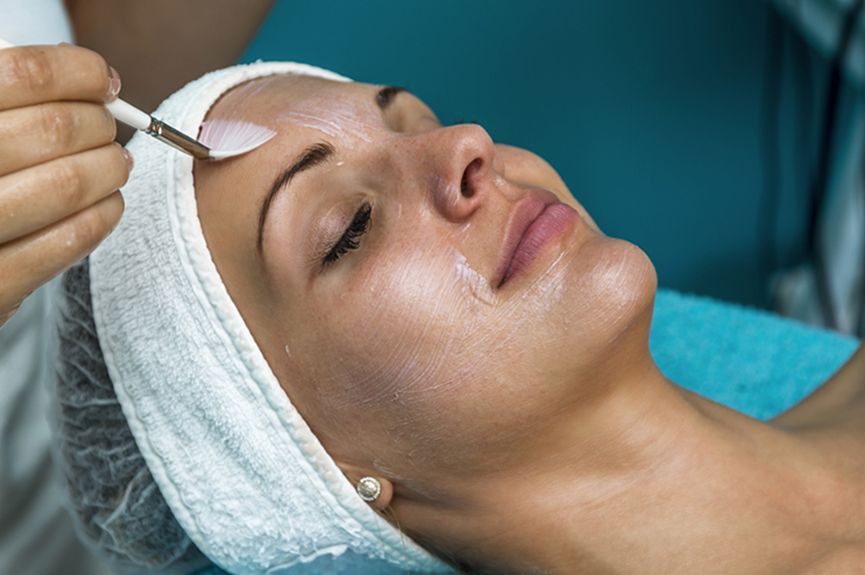
Pimple Scarring FAQs
Most people can undergo a chemical peel for pimple scars. Your dermatologist will determine whether a peel is the right treatment for your scars or hyperpigmentation and whether you meet the criteria for eligibility. You may need to avoid or delay a chemical peel if you:
- Currently have or recently had a bacterial, fungal, or herpes infection
- Have had X-rays or radiation on your head or neck
- Have a suppressed immune system
- Had a major facial surgery within the past six months
- Have taken isotretinoin in the past 12 months
- Are pregnant.
Chemical peels have been performed for decades, and they’re generally safe and effective. In some cases, you may have side effects, but these are usually very mild if the person performing the peel is an experienced dermatologist. Side effects may include:
- Redness that may last several months
- Darkening of the skin, which is temporary
- Lighter skin
- Scarring, which is very rare when done correctly
- If you don’t carefully follow the aftercare instructions from your dermatologist, these side effects may be more serious, and infections may occur, resulting in scarring.
In addition to minimizing the appearance of pimple scarring, chemical peels address other skin problems, from wrinkles and enlarged pores to discoloration, including:
- Hyperpigmentation
- Wrinkles
- Fine lines
- Acne
- Sun damage
- Damaged skin

